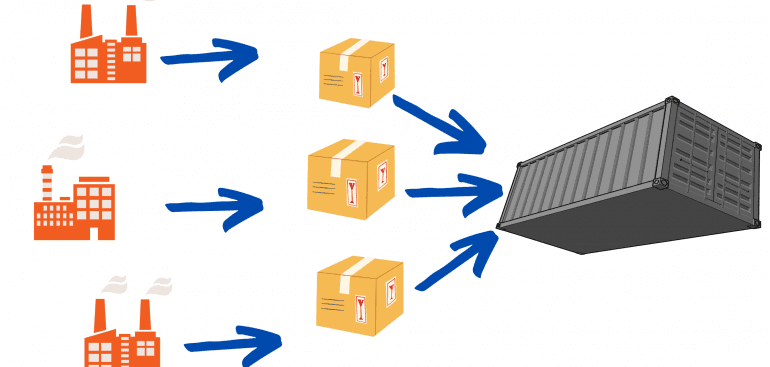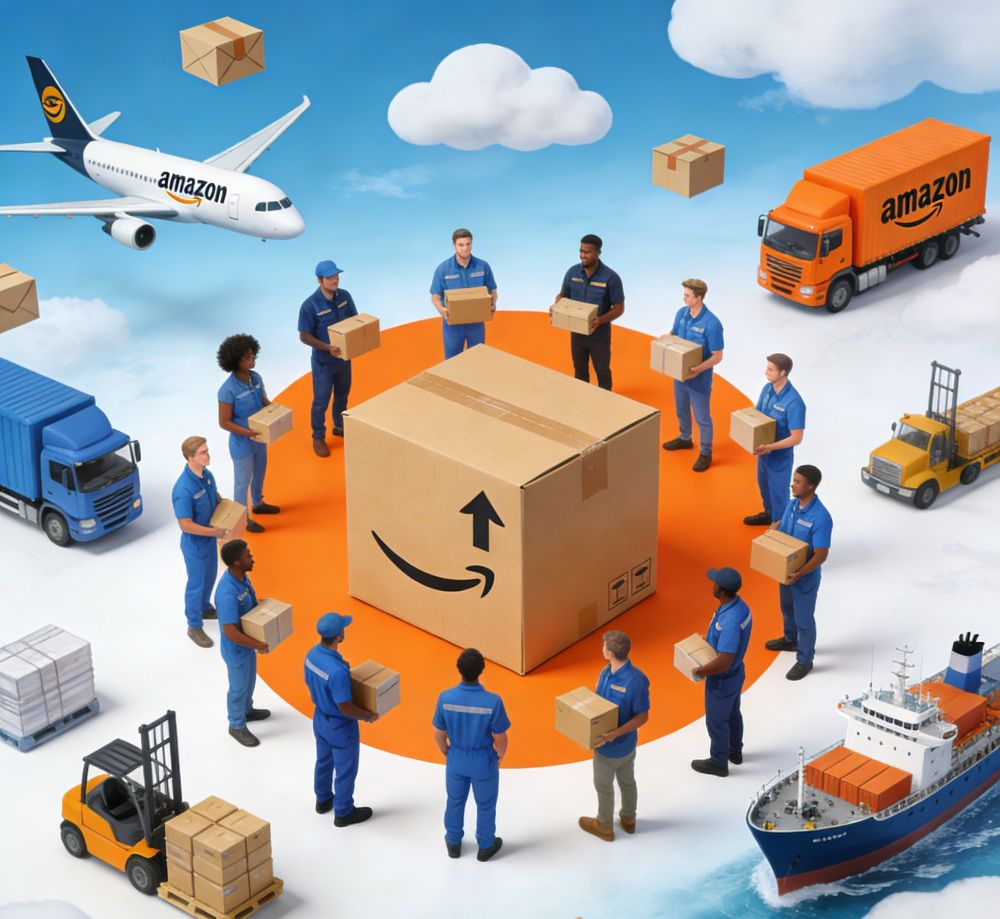BLOG
What Is LCL Shipping? A Step-by-Step Guide for Beginners
- wanmeili
- 2024-09-23
What Is LCL Shipping?
LCL (Less than Container Load) shipping is a method of shipping goods that do not fill an entire shipping container. It is a cost-effective option for small to medium-sized shipments that do not require a full container.
In LCL shipping, multiple smaller shipments from different companies are consolidated into a single container at a freight forwarder’s warehouse. This allows businesses to share the cost of shipping and makes it more affordable than booking an entire container for a smaller shipment.
When to Choose LCL Shipping
LCL shipping is ideal for businesses that do not have enough goods to fill a container or for those who want to reduce shipping costs. It offers flexibility and efficiency, as goods are consolidated and shipped together, which can help reduce transit times.
How LCL Shipping Works
The Basics of Less Than Container Load (LCL) Shipping
LCL container shipping is a transportation method often used in Ocean Freight Shipping where multiple shippers share space in a single shipping container.

How LCL Differs from FCL (Full Container Load)
LCL shipping is more cost-effective for small to medium-sized shipments compared to full container load (FCL) shipping, as shippers only pay for the space their goods occupy in the container.
The Process of Shipping with LCL: Step-by-Step
Consolidation: Goods from different shippers are consolidated at a LCL freight forwarder’s warehouse before being loaded into a shared container. This consolidation helps reduce costs and allows smaller shippers to access international markets.
Packaging and Labeling: Proper packaging and labeling of goods are crucial in LCL shipping to ensure safe transport and efficient handling. Shippers must adhere to specific packaging requirements to prevent damage during transit.
Transit Time: Due to the need to consolidate and deconsolidate shipments, LCL ocean freight may have longer transit times compared to FCL shipping. Shippers should consider this factor when planning their supply chain.
Documentation: Shippers are required to provide the necessary documentation for customs clearance, including commercial invoices, packing lists, and other relevant paperwork. Freight forwarders assist in preparing and verifying the accuracy of these documents.
Customs Clearance: Customs clearance is a critical step in LCL shipping, as goods from multiple shippers must navigate customs regulations at the destination port. Proper documentation and compliance with import/export laws are essential to avoid delays.
Final Delivery: Upon arrival at the destination port, goods are deconsolidated, and individual shipments are distributed to their respective recipients. Shippers can choose to pick up their goods at the port or arrange further inland transportation to the final delivery location.
When to Choose LCL Over Other Shipping Methods
Comparing LCL, FCL, and Air Freight: Which Is Best for You?
When deciding on the most suitable shipping method for your goods, it’s essential to consider the specifics of your shipment, budget, time constraints, and the level of risk you are willing to take. Let’s compare Less Than Container Load (LCL), Full Container Load (FCL), and Air Freight Shipping to help you determine which option might be best for your needs:
Volume of Goods:
LCL: Ideal for smaller shipments that cannot fill a full container. Cost-effective for businesses with limited inventory or smaller quantities of goods.
FCL: Suitable for larger shipments that fill or nearly fill a standard container. Cost-effective for bulk shipments.
Air Freight: Expensive but appropriate for urgent or high-value shipments that need to reach the destination quickly.
Cost Consideration:
LCL: Cost-effective for smaller shipments as you only pay for the space your goods occupy in the shared container. Ideal for businesses looking to reduce shipping costs.
FCL: Can be cost-effective for larger shipments as you pay for the entire container. Suitable for businesses with a significant amount of goods to transport.
Air Freight: Generally the most expensive option due to the speed and convenience it offers.
Transit Time:
LCL: Longer transit times compared to FCL due to the need to consolidate and deconsolidate shipments. Not always the fastest option.
FCL: Generally faster than LCL as there is no need for consolidation. Ideal for time-sensitive shipments that do not require air freight speed.
Air Freight: Fastest option for shipping goods internationally, suitable for time-critical shipments.
Safety and Security:
LCL: Higher risk of damage due to multiple handling during consolidation and deconsolidation. Proper packaging is crucial.
FCL: Lower risk of damage as goods are loaded into the container at the shipper’s facility and remain sealed until destination.
Air Freight: Generally considered safer than sea freight due to the reduced handling and quicker transit times.
Customs Clearance:
LCL: Multiple shipments in a shared container may complicate customs clearance procedures. Proper documentation and compliance are essential.
FCL: Simplified customs clearance as there is only one shipper’s goods in the container.
Air Freight: Faster customs clearance process compared to sea freight, making it suitable for time-sensitive shipments.
Flexibility:
LCL: Offers flexibility for smaller shipments without the need to commit to a full container. Suitable for businesses with varying shipping volumes.
FCL: Less flexible than LCL as you need to book and pay for the entire container, regardless of the fill rate.
Air Freight: Flexible and ideal for urgent shipments that require quick and reliable delivery.
The Ideal Scenarios for Using LCL Shipping
Flexible Shipping Volumes:If your shipping volumes vary from time to time and you do not have a consistent need for a full container, LCL offers flexibility. You can send different quantities of goods without committing to a specific container size.
Global Destinations:LCL shipping is suitable for businesses exporting goods to various global destinations. It provides access to international markets without the need to fill a full container for each destination.
Sample Shipments:When sending product samples, prototypes, or smaller orders to test new markets or fulfill specific orders, LCL shipping allows you to ship these smaller quantities economically.
Limited Inventory and Stocking Goods:If you have limited inventory or stock goods in smaller quantities, using LCL shipping can help you manage your supply chain efficiently without overcommitting to full container loads.
Testing Markets:For businesses expanding into new markets and testing the demand for their products without a large initial investment in shipping, LCL can be a suitable option to start with.
Cost-Effective Shipping for Seasonal Goods:If you ship seasonal goods or products with fluctuating demand throughout the year, LCL shipping can offer a cost-effective solution to manage varying shipment volumes.
Key Factors to Consider When Opting for LCL
Volume and Size of Goods:
Evaluate the volume and size of your goods to determine if they are suitable for LCL shipping. Ensure your goods will not occupy a full container to benefit from cost savings.
Cost Comparison:
Compare the costs of LCL shipping with other shipping options, such as Full Container Load (FCL) or air freight, to determine the most cost-effective solution based on your shipment size and destination.
Transit Time:
Consider the transit time for LCL shipments, as they may vary due to multiple stops to load and unload goods from different shippers. Ensure the transit time aligns with your business requirements.
Consolidation Services:
Research the consolidation services offered by your freight forwarder or carrier to understand how they combine multiple LCL shipments to optimize container space and efficiency.
Packaging and Handling:
Properly package and label your goods to prevent damage during handling and transit. Consider any specific requirements for LCL shipments to ensure goods are secure and protected.
Documentation and Customs Compliance:
Ensure you have all necessary documentation in order, including commercial invoices, packing lists, and customs paperwork. Understand customs regulations and compliance requirements for LCL shipments.
Cargo Insurance:
Evaluate the need for cargo insurance to protect your goods during transit. Confirm the extent of coverage provided by the carrier and consider additional insurance based on the value and nature of your goods.
Destination and Delivery:
Determine the final destination of your goods and consider factors such as accessibility, local regulations, and delivery options. Coordinate with your logistics provider for smooth delivery arrangements.
Communication and Tracking:
Maintain clear communication with your freight forwarder or carrier to track your shipment’s progress. Utilize tracking tools and updates to monitor the movement of your goods throughout the shipping process.
Risk Assessment:
Assess potential risks associated with LCL shipping, such as delays, consolidation issues, or damage to goods. Develop contingency plans to mitigate risks and address any unexpected challenges.
Conclusion:
In conclusion, LCL shipping involves the consolidation of multiple smaller shipments into a single container, making it a cost-effective and efficient option for businesses looking to ship smaller quantities of goods internationally. Proper packaging, documentation, and handling are essential to ensure a smooth and successful LCL shipping process.
FAQ Guide: Making LCL Shipping Simple and Easy
Is LCL shipping more expensive than other options?
It’s cheaper if the shipper’s cargo is not enough to fill a container.
How long does LCL shipping take?
Depends on origin and destination, usually slower than FCL.
What kind of goods are suitable for LCL shipping?
Small quantity and shippers of whose want to save shipping costs and are not sensitive to shipping time.
How do I ensure my goods are safe during LCL shipping?
Proper packaging and buying cargo insurance are needed to keep goods safe during LCL shipping.
You can track the goods according to the container number given by the freight forwarder.



